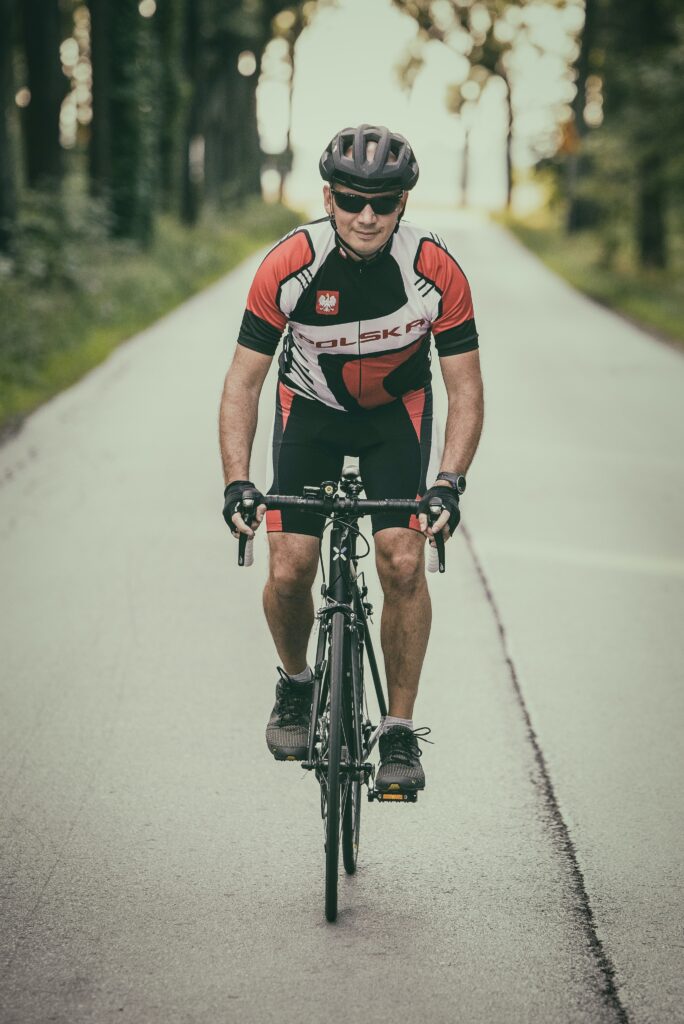Cycling Can Change Your Mind and Body
To be healthy and fit you need to be active physically. Period.
Regular physical activity has the power to protect you from diseases such as mental illness, diabetes, arthritis, and obesity. And when it comes to physical activity, cycling is one of the best ways to reduce your health risks.
Research shows that integrating cycling into your daily routine is healthy for your brain and your body as well.
If you ever rode to work using your bike and found that mental capabilities and your mood feels better.
Many people cycle to get in shape or live a healthier life. However, those who are in good shape can still cycle to improve their mental strength.
How Cycling Impact Our Brains
Your brain on cycling: Riding can grow your brain in the same way it grows your muscles. It can act as a neural fertilizer to your brain.
When cycling, blood flow to the muscle increases, making the body build more capillaries leading to more supply of blood.

This process equally occurs in the brain.
Cycling can make the cardiovascular system grow further leading to more nutrients and oxygen, which improves brain performance. Riding allows the brain to increase protein production which is necessary for the development of new brain cells.
Regular cycling helps in doubling the production of new cells in the brain. This leads to an increase in neurotransmitter activity which allows the brain to communicate effectively, thus improving cognitive abilities.
Cycling is important for aging brains because it also counteracts the natural decrease in the functioning and development of the brain. Scientists compared adult brains of age 60s and 70s, discovering that those who cycle regularly appeared younger than the others who did not. This shows that cycling keeps sharpening the mind even in old age. Well-grown and more connected brain works better. Period.
Cycling shifts the mental well being: People can experience the importance of cycling on psychological well-being despite being physically healthy. It helps improve the sense of self-worth and one’s self-perception, which can lead to higher self-esteem.
Cycling can help people who are struggling with mild depression or patients with mental health problems. It reduces anxiety, allows you to deal with stress more effectively and improves your subjective mood. It improves the level of dopamine and serotonin production. These chemicals make you feel happy when they are released in your brain.
When you cycle, the body improves the ability to regulate adrenaline and cortisol hormone, allowing you to handle stress well.
The imbalance of these hormones causes your body to react negatively. Therefore, routine cycling will allow the body to handle stress effectively. As a result, this can also lead to improved sleeping cycles.
When you cycle, you exercise your body as well as get fresh air (if cycling outside). This helps in sharpening your problem-solving skill alongside creativity. This is a good way to refocus your mind on positivity. Your productivity at work will improve if you cycle regularly. It boosts your mind with the extra positive energy which is recommended for your happiness.

How Cycling Impacts Your Body
Cycling boosts your bowels: Physical activity helps reduce the time that food moves through the large intestines limiting water absorption into the body, thus softer stool which is easy to pass.
Aerobic exercise achieved from riding improves the heart and breathing rate.
This helps with intestinal contraction which prevents one from feeling bloated.
Cycling improves your sex life: Cycling boosts your vascular health which has an effect of boosting your sex drive. Research conducted by Harvard University found that male cyclists aged above 50 who cycled three hours a week had a 30 per cent reduced risk of impotence than those who did not exercise.
Greater leg strength: Increased leg strength is achieved by high resistance and low cadence. Cadence refers to the speed of the pedals when it rotates. To increase the strength of your legs, cadence below 80 revolutions per is recommended.
Use a gear that gives a considerable resistance. For example, if you are using a bike of 18-speed, the largest gear is found at the pedal and the fourth gear is located outward the rear wheel.
Increases endurance of your legs: Increased leg endurance is achieved by high cadence and low resistance. It is recommended to use a cadence of 100 revolutions per minute along with low gear. For example, if you are using a bike of 18-speed use the smallest gear.
Cycling improves coordination: Riding involves the cooperation of most muscles in the body. When you are new to cycling, you can easily fall off because of a lack of coordination. Your legs must sync to be able to pedal effectively.
You should be able to maintain bike balance by using the core and pedal at ago. The arms should work together to hold the brakes and handlebars.
Cycling reduces body fat: The nutritional requirement in the body involves fat, protein and carbohydrate. Carbohydrates are broken down into glucose for use and its excess converted to glycogen and stored in the liver or muscles to be used later.
Less oxygen is required to convert carbs to energy compared to metabolizing fat. This means you can take carbs along the way. Riding burns a lot of calories about 500 in 30 minutes ride. This will help in losing weight by creating a calorific deficit. Ensure to snack sensibly as you cycle especially if you are intending to lose weight.
Early morning rides develop an after-burn effect. Early morning cycling does not only help to burn fat during the process but you will continue to burn the fat even after cycling. This is because morning rides keep your metabolism accelerated for hours after riding.
Night cycling, however, does not offer the after-burn effect because the metabolism rate will drop immediately you go to sleep. Therefore, do not take carbohydrates before you go to sleep. Your metabolism rate is slowed when sleeping than during the day.
Cycling build muscles: The resistant element of riding means that it just doesn’t burn fat but rather build muscles too, majorly around the hamstring, calves, and quads. People with muscles burn more calories than fat because muscle is leaner than fat.
Cycling improves your lung health: Recent research shows that people who ride bikes are less exposed to dangerous fumes than car travelers thus improved lung conditions.
Cycling strengthens your immune system: Studies conducted by Appalachian State University found that cycling had a great impact on the upper respiratory, therefore, minimizing the chances of a common cold.
Cycling improves special awareness and handling: Cycling is not only about improving your heartbeat but there are other elements such as cornering, climbing and descending will help you to learn how to use your body weight to take the bike anywhere you want to go.
Getting skills to manage these elements boost your confidence as well as self-esteem.
Cycling and Specific Health Issues
Weight control and obesity: Riding is a good way to control and reduce weight. It increases the rate of metabolism, promotes building of muscles and burning of fat. Combine cycling with a healthy eating plan, if you want to lose weight. Riding is a comfortable exercise.
Consistent cycling burns about 300 calories per hour. Therefore, if you ride twice a day the calorie burnt will soon add up. This will in turn help in controlling your weight.
Cardiovascular disease and cycling: Examples of cardiovascular diseases include high blood pressure, stroke and heart attack.

Frequent cycling improves and stimulates your lung and heart circulation. This helps reduce the risk of cardiovascular disease.
Cycling reduces blood fat levels; strengthens the heart muscles and lowers the resting pulse. Research also shows that people who ride to work have less exposure to pollution than car commuters. Relaxed cycling also protects the rider from heart diseases.
Cancer and cycling: Researchers have conducted the relationship between cycling and cancer. They found that cycling help reduces the chance of bowel cancer and the risks of breast cancer.
Diabetes and cycling: Type 2 diabetes is increasing and is a serious concern for public health. Lack of exercise is the major reason why people develop this type of disease. Finland’s Large-scale researchers found that those who cycle for 30minutes every day had a 40 per cent drop of risks of developing diabetes.
Arthritis, bone injuries, and cycling: Cycling improves balance, strength and coordination. It helps prevent fractures and falls. Cycling is important if you have osteoarthritis because it is a low impact exercise that puts little stress on joints. Cycling can improve osteoarthritic conditions even in old age hence fastening recovery.

Final Thoughts
Riding is a low impact and effective way to stay healthy and fit. It has benefits such as leg endurance and strength, reduces body fat as well as improving your brain system. Cycling is good exercise for your legs and body.
You can control your gears and cadence to improve leg strength and endurance. It also boosts your confidence thus improving your self-esteem. Cycling also helps in reducing the risks of some diseases like diabetes, cancer, arthritis, or cardiovascular diseases.
However, whether you want to boost your health, bank balance, environmental choice or fitness, taking up cycling could be the best decision you ever make.

